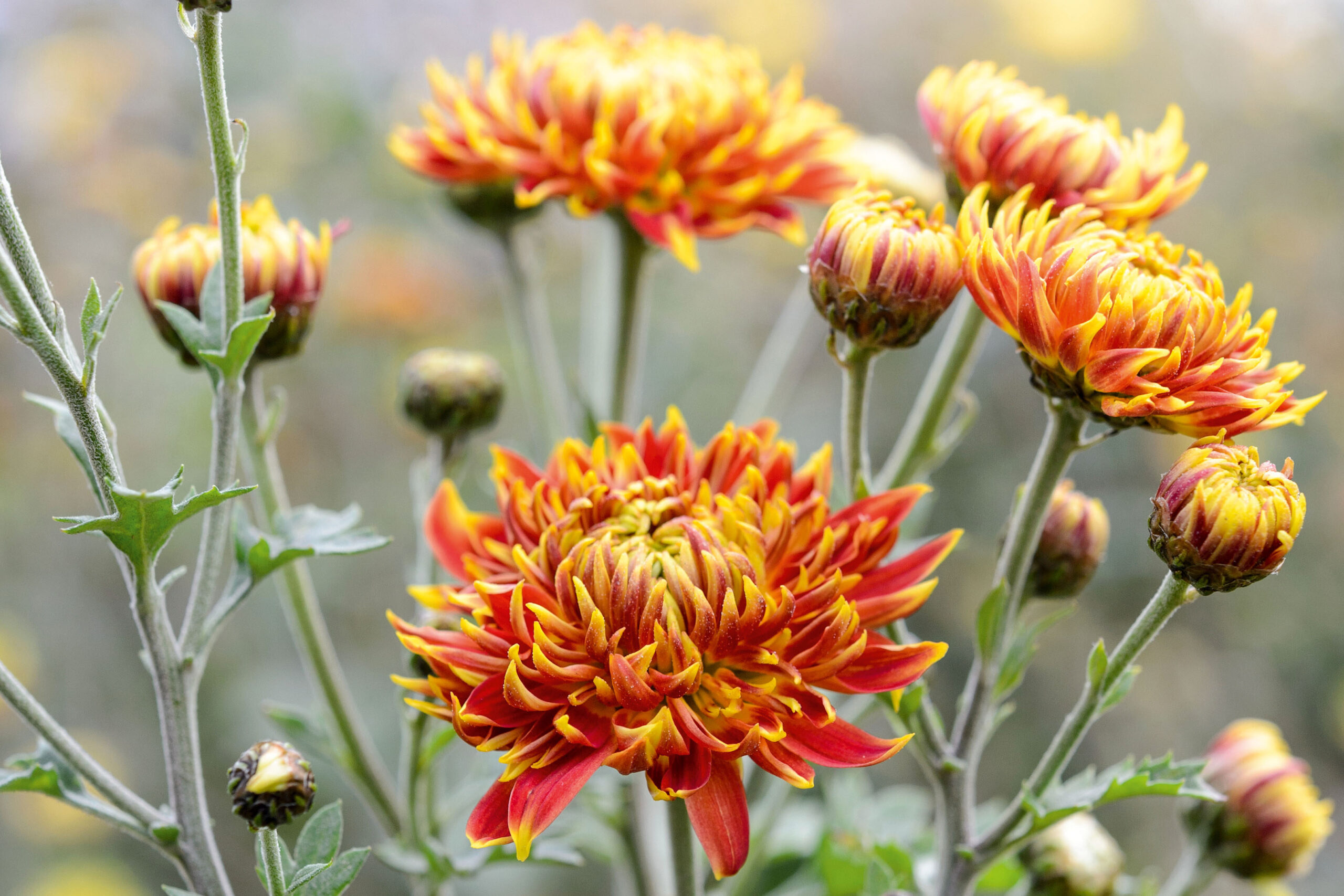
Chrysanthemums
Botanical Name
:
Chrysanthemum Indicum
Plant Type
:
Herbaceous flowering perennial
Seasons
:
Plant in spring; Blooms in summer and fall
Sun Level
:
Full sun with at least 6 hours of sunlight daily
Ideal Soil Temperature for Planting
:
Aim for soil temperature between 70–75°F
Soil Type
:
Fertile, well-drained soil enriched with organic matter or compost
Hardiness Zones
:
USDA zones 5–9
Germination
:
Typically occurs within 7–14 days of sowing
P.H. Level
:
Neutral or slightly acidic with pH 6.5 to 7.0
Water/Irrigation
:
Water the plant when the top inch of soil feels dry to the touch; soil should remain moist, but not soggy
Fertilization
:
Apply a 20-10-20 fertilizer when planting and throughout the vegetative growth phase. Superphosphate supports root development. Once the plant is established, transition to a 5-10-5 liquid fertilizer.
Habit
:
Bushy, branched
Propagation
:
Root division and cuttings
Final Plant Height
:
2–4 ft
Spread
:
2–3 ft
Flowers
:
Soft and tightly mounded daisy-like petals in shades of white, yellow, orange, lavender, purple, and red
Attracts
:
Bees and butterflies
Uses
:
Fall-blooming ornamentals, border plantings, and mixed perennial beds
Companions
:
Marigolds, sedum, snapdragons, basil, and ornamental peppers
Pruning
:
Start pinching back the stems in spring when the plants reach about 6 inches in height
Toxicity
:
Toxic to pets
Pests
:
Aphids, spider mites, and leafminers
Diseases
:
Aster yellows, powdery mildew, and septoria leaf spot
Additional Info
:
Provide mulch to retain moisture and protect roots in winter; remove spent flowers to prolong blooming
Botanical Name
:
Chrysanthemum Indicum
Plant Type
:
Herbaceous flowering perennial
Seasons
:
Plant in spring; Blooms in summer and fall
Sun Level
:
Full sun with at least 6 hours of sunlight daily
Ideal Soil Temperature for Planting
:
Aim for soil temperature between 70–75°F
Soil Type
:
Fertile, well-drained soil enriched with organic matter or compost
Hardiness Zones
:
USDA zones 5–9
Germination
:
Typically occurs within 7–14 days of sowing
P.H. Level
:
Neutral or slightly acidic with pH 6.5 to 7.0
Water/Irrigation
:
Water the plant when the top inch of soil feels dry to the touch; soil should remain moist, but not soggy
Fertilization
:
Apply a 20-10-20 fertilizer when planting and throughout the vegetative growth phase. Superphosphate supports root development. Once the plant is established, transition to a 5-10-5 liquid fertilizer.
Habit
:
Bushy, branched
Propagation
:
Root division and cuttings
Final Plant Height
:
2–4 ft
Spread
:
2–3 ft
Flowers
:
Soft and tightly mounded daisy-like petals in shades of white, yellow, orange, lavender, purple, and red
Attracts
:
Bees and butterflies
Uses
:
Fall-blooming ornamentals, border plantings, and mixed perennial beds
Companions
:
Marigolds, sedum, snapdragons, basil, and ornamental peppers
Pruning
:
Start pinching back the stems in spring when the plants reach about 6 inches in height
Toxicity
:
Toxic to pets
Pests
:
Aphids, spider mites, and leafminers
Diseases
:
Aster yellows, powdery mildew, and septoria leaf spot
Additional Info
:
Provide mulch to retain moisture and protect roots in winter; remove spent flowers to prolong blooming
Written by Nondiah Khalayi – https://www.linkedin.com/in/nondiah-khalayi/

